Welcome to this guide to gues… Oh wait hang on… You haven’t entered your email address….
Done? Great, now we can carry on. Welcome to this guide to guest checkouts, where we’ll take a look at best pract… hang on, your password isn’t valid, please try again.
Okay, great, let’s carry on… Hang on, have you already registered that email with us before? I’m sorry you can’t use that address if you’ve already registered it.
Guest checkouts! I love them. If it was at all possible I would carry out every transaction super quickly and utterly anonymously.
Last week our esteemed editor Graham Charlton compiled a list of the 11 best ecommerce checkouts in the world and in doing so came up with seven key features he felt were common to good practice.
These include speed, no forced registration and easy form filling. As far as I’m concerned having a guest checkout can cover all these things and more.
However, am I wrong about the glory of guest checkouts? Are there any drawbacks I’m not thinking of? Are there any best practice tips that can help ecommerce websites improve their guest checkouts?
Lets take a look. Wait, hang on, before we go any further, can you just enter your delivery address please…
Benefits of guest checkout
Firstly, why should ecommerce sites have a guest checkout?
Customer experience is the most obvious benefit…
“I’m in a rush, I don’t have time for endless form-filling and although this is the first time I’ve ever used this website I have no further plans to buy anything from it ever again. Guest checkout, brilliant thank you, maybe I will come back and spend more time with you.”
Is guest checkout only for the benefit of your customers though?
Forcing users to register their details before they checkout is a quick way to lower your conversion rate. Once a customer is ready to buy, they don’t want to have to fill out pages and pages of personal details and create an account before they can make a purchase.
In fact ASOS managed to halve its abandonment rate at the registration page simply by removing any mention of creating an account.
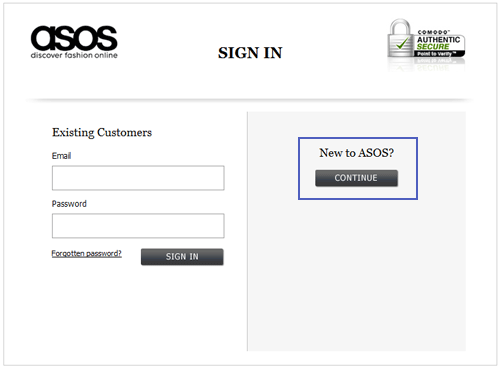
Drawbacks
There are many benefits for retailers if customers do register their details. The retailer will now have access to their email address for marketing purposes, along with lots of data about the customer that can make future marketing messages much more personalised and therefore more attractive to the customer.
More meaningful relationships can be built with the customer this way. The onsite experience can then be tailored to that individual’s previous purchases. Just think of how Amazon probably never serves the same homepage to two different signed-in visitors.
It also makes it easier for retailers to ask for feedback, or for customers to leave reviews of the products they have purchased.
Still though, registering can be a major hassle, and as handy for targeting and marketing the process may be to your business, it’s still something that consumers see as an obstacle. Hence why guest checkouts are a great alternative.
To be honest though, I do enjoy my tailored ecommerce experiences and often these have helped me with gift-buying on occasions when I’ve been stumped.
Maybe there’s a compromise? A guest checkout that offers similar benefits of guest registration?
Best practice
One page checkout
Keep the checkout to as few pages as necessary. In fact everything from contact information, billing address, delivery address and payment information can be done on a single page. This will help speed things up, especially if a customer is on a mobile.
You should also ask yourself whether all of the information you’re asking for is absolutely necessary.
A good way to complement guest checkout, which will also save on form-filling, is to offer PayPal as payment method.
Provide options at the start
If you must insist on making customers register at the start of the checkout process, offer guest checkout on the same page. Then you can also offer up a couple of benefits of registration under the respective option.
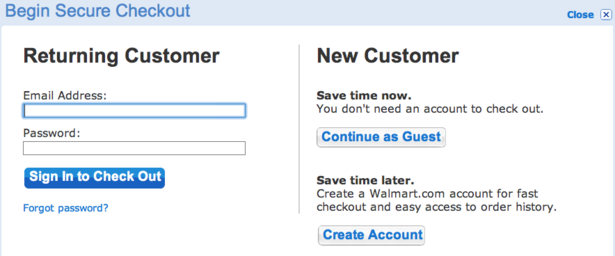
Have guest checkout as the default option
Just ask customers to start filling in their payment details and delivery address immediately. That will certainly raise conversion rates. Then offer the opportunity to register details after the purchase is complete. There should also be an option to sign-in if they already have an account throughout the onsite journey.
Alternatively you can offer a single page that doubles as a guest checkout (with a note that you can create an account later) and as a sign-in page.
“Would you like to save your details for next time?”
If you’ve gone with the above option, at the end of the transaction don’t even mention the word ‘register’. Instead offer to save the customer details for next time. ‘Saving your details’ implies convenience, it puts customer experience as the primary focus. ‘Registering’ implies a future marketing spam attack that will put customers off.
For added convenience, you can even automatically fill in any details that the customer has already given you, such as name, address and email. All that may be left for the customer to do is choose a password,
Also don’t forget to clearly promote the benefits of ‘saving details’ after the purchase.
It’s a good idea to ask customers to choose from a range of marketing preferences once they have registered, this puts them in complete control.
Same email address should work with multiple guest checkouts
Graham Charlton brought this to my attention recently, upon using Schuh’s website. It was impossible to use guest checkout if you’ve already set up an account with Schuh using the same email.
Similarly with White Company, if you’ve used the same email for guest checkout before, you can’t do it again.
According to ecommerce expert James Gurd it depends on the logic of the account log-in/creation process. Some sites don’t configure guest checkout to work with email addresses from existing accounts, so a registered user always has to use the registered account.
James Gurd also went on to reveal this bizarre anomaly with Amazon…
Amazon has a quite odd logic. Try to go through guest checkout with existing email address and it tells you that email address is registered. It then gives you an option to create a new account with that same email address. If you do, the old one is disabled. So I could hack your account by using your email address and get your old account disabled.
For more useful information on ecommerce best practice from the blog, check out these handy beginner’s guides to basket abandonment emails, retargeting and why Norman Records is a masterclass of ecommerce design.









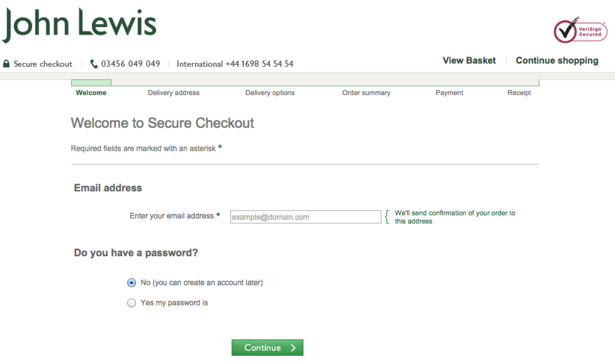
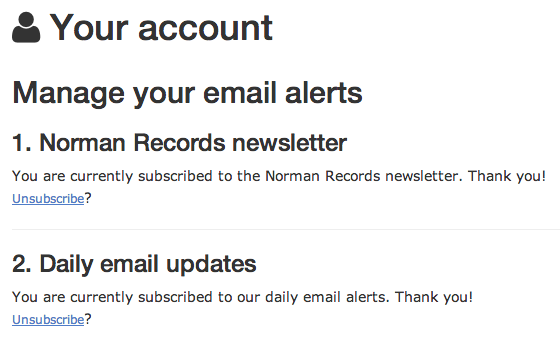
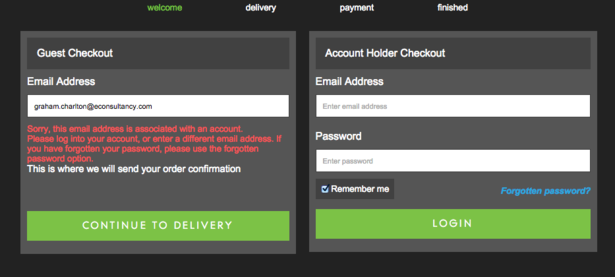














No Comments